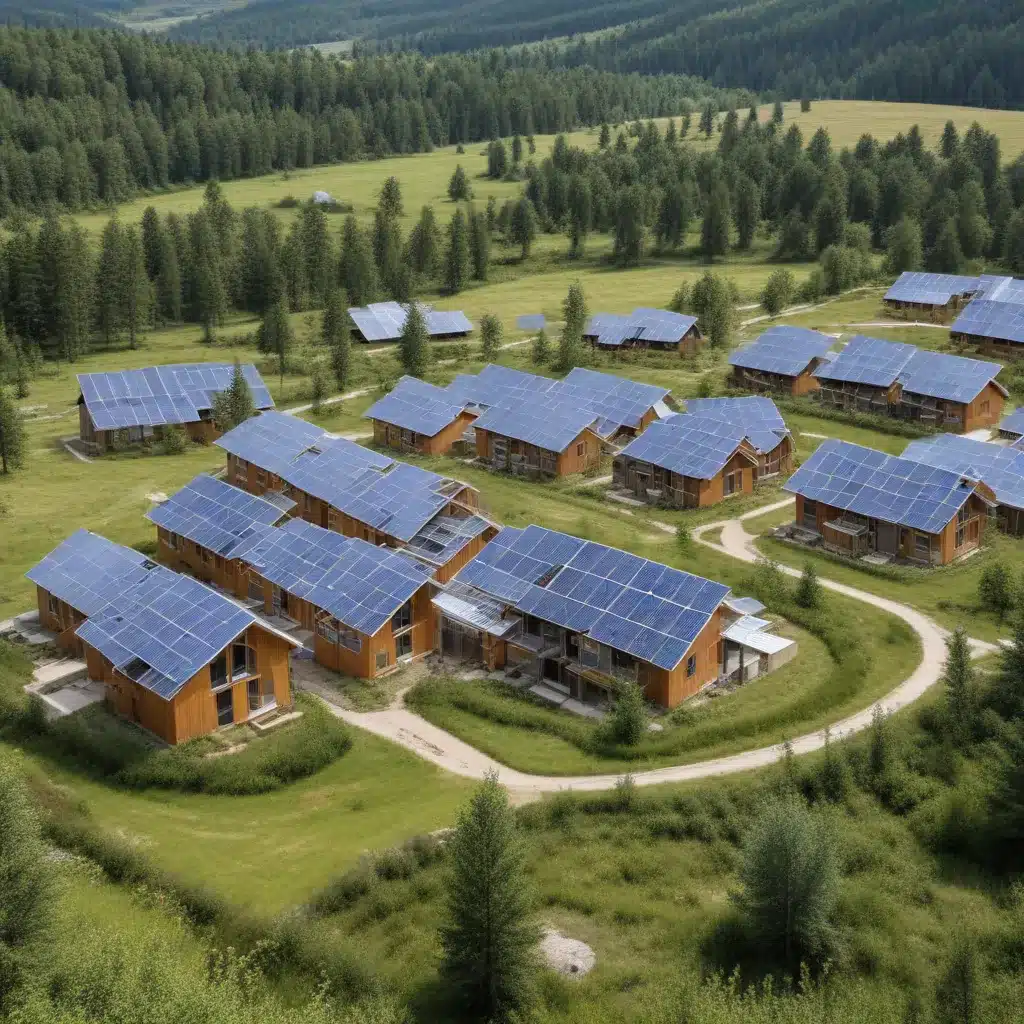
As the shift towards clean energy accelerates across Europe, sustainable environmental design has emerged as a critical approach to harmonizing the built environment with renewable power sources and passive strategies. By carefully integrating solar, wind, and geothermal technologies, along with passive design principles for thermal regulation, daylighting, and natural ventilation, designers can create spaces that are not only visually appealing but also environmentally responsible.
Renewable Energy Strategies
The integration of renewable energy systems is a cornerstone of sustainable environmental design. Solar power, for instance, has seen remarkable advancements in recent years, with improved photovoltaic (PV) cell efficiency and the emergence of innovative building-integrated PV (BIPV) solutions. Architects and engineers are now seamlessly incorporating solar panels into building facades, rooftops, and even shading structures, blending renewable power generation with the overall aesthetic.
Similarly, the harnessing of wind power has become an increasingly prevalent strategy, particularly in coastal regions and areas with consistent wind patterns. The installation of wind turbines, both at the building scale and the community level, can contribute significantly to a project’s energy needs while reducing dependence on fossil fuels.
Beyond solar and wind, the utilization of geothermal energy has also gained traction in sustainable environmental design. By tapping into the earth’s constant subsurface temperatures, geothermal heat pumps can provide efficient heating and cooling, reducing the overall energy consumption of a building.
Passive Design Approaches
Complementing the integration of renewable energy systems, passive design strategies play a crucial role in enhancing the environmental performance of buildings. These approaches leverage natural elements, such as sunlight, wind, and thermal mass, to regulate indoor temperatures and minimize the need for mechanical heating and cooling.
Thermal regulation through strategies like optimal insulation, strategic window placement, and thermal mass storage can significantly reduce a building’s energy demands. By harnessing the sun’s radiant energy and controlling heat transfer, passive design can create comfortable indoor environments while reducing greenhouse gas emissions.
Daylighting optimization is another key passive design strategy, leveraging natural light to illuminate interior spaces and reduce the reliance on artificial lighting. Thoughtful window positioning, light shelves, and skylights can effectively distribute daylight throughout a building, enhancing occupant well-being and minimizing energy consumption.
The integration of natural ventilation systems is also a fundamental aspect of passive design. By strategically positioning openings and utilizing the natural flow of air, designers can create comfortable indoor environments without the need for energy-intensive mechanical ventilation systems.
Integrated Design Evaluation
The success of sustainable environmental design lies in the comprehensive evaluation of a project’s performance, taking into account energy efficiency, environmental impact, and cost-benefit considerations.
Performance assessment is crucial, involving the use of simulation tools, energy modeling, and post-occupancy evaluations to ensure that the integrated renewable energy and passive design strategies are achieving their intended goals. This data-driven approach allows designers to fine-tune their strategies and make informed decisions to optimize a building’s operational efficiency.
In addition to performance assessment, environmental impact analysis plays a vital role in sustainable environmental design. By employing life cycle assessment (LCA) techniques, designers can quantify the project’s embodied energy, carbon emissions, and resource consumption throughout its entire life cycle, from material extraction to end-of-life disposal. This holistic approach enables informed decision-making and the selection of the most environmentally responsible design solutions.
Lastly, cost-benefit considerations are essential in ensuring the long-term viability of sustainable environmental design. By carefully analyzing the initial investment, operational savings, and potential incentives or tax credits, designers can demonstrate the financial benefits of their integrated approaches, making a compelling case for their adoption by clients and stakeholders.
Sustainable Material Selection
The selection of sustainable materials is another crucial component of environmental design. By prioritizing materials with low embodied energy and high recycled content, designers can minimize the environmental impact of a building’s construction and operation.
Through embodied energy analysis, designers can compare the energy required to extract, process, and transport various building materials, ultimately selecting those with the lowest carbon footprint. Similarly, the incorporation of recycled content in materials, such as structural steel, insulation, and finishes, contributes to a more circular economy and reduces waste.
Strategies for waste reduction during construction and throughout a building’s life cycle are also essential. By implementing measures like modular design, off-site prefabrication, and on-site recycling programs, designers can significantly minimize construction waste and promote a more sustainable approach to material handling.
Occupant Comfort and Wellbeing
Sustainable environmental design goes beyond mere energy efficiency; it also prioritizes the health, comfort, and well-being of building occupants. By optimizing indoor air quality, maintaining appropriate thermal comfort levels, and incorporating biophilic design elements, designers can create spaces that enhance the overall user experience and promote productivity, creativity, and overall wellness.
Indoor air quality is a critical aspect of occupant well-being, and sustainable design strategies can mitigate the presence of volatile organic compounds (VOCs), particulate matter, and other pollutants through the selection of low-emitting materials and the integration of effective ventilation systems.
Thermal comfort, achieved through the synergistic integration of passive and active strategies, ensures that occupants experience consistent and suitable indoor temperatures, contributing to their overall satisfaction and productivity.
The incorporation of biophilic design principles, which seek to connect building occupants with nature, can further enhance the sustainable environmental design approach. By integrating natural elements, such as greenery, water features, and natural lighting, designers can foster a sense of connection with the natural world and promote mental and physical well-being.
As the demand for sustainable and environmentally responsible buildings continues to grow across Europe, the integration of renewable energy systems, passive design strategies, sustainable material selection, and occupant-centric approaches will be paramount in creating a built environment that is in harmony with the natural world. By embracing these principles, designers can pave the way for a future where the built environment not only meets our functional needs but also contributes to the overall health and resilience of our planet.







